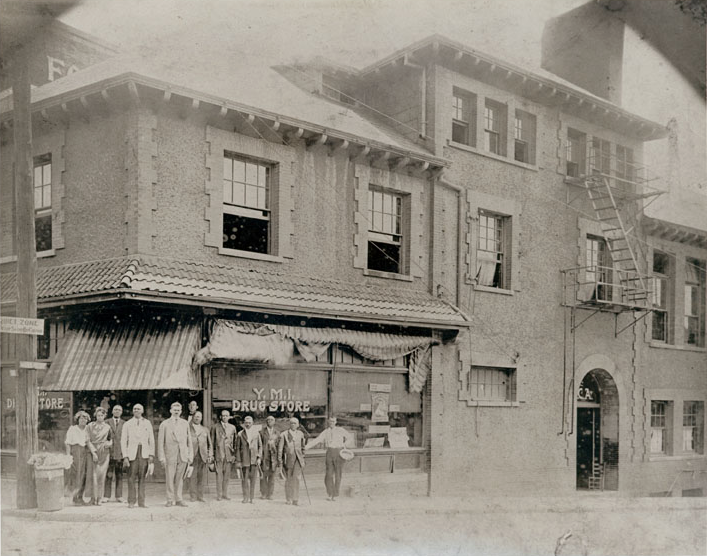On the morning of Wednesday, Nov. 14, 1906, Asheville’s Mayor Alfred Barnard sent North Carolina Gov. R.B. Glenn the following message:
“Asheville offers $500 reward for the negro suspect supposed to be Will Harris, who killed four persons, including two policemen here last night. Want state to assist. What reward will you offer?
ALFRED S. BARNARD.
“Mayor.”
This past Sunday, Nov. 13, marks the 110th anniversary of the Will Harris murders. Over the next several weeks, we will examine the event, as reported at that time in a series of newspaper articles chronicling the violence. These writings were made available to us, courtesy of the Thomas Wolfe Memorial. Thirty-one years after the event, Thomas Wolfe would reimagine the murders in his 1937 Saturday Evening Post story, “The Child by Tiger.”
On Wednesday, Nov. 14, 1906, The Asheville Gazette News reported:
With four fresh murders to his credit, a price upon his head and armed to the teeth, a negro believed to be the noted desperado, Will Harris of Mecklenburg county, is being hunted today by armed posses and bloodhounds in the sections surrounding Asheville.
While many citizens with rifles and shotguns are scouring the mountains and valleys for the desperado, other citizens of Asheville mourn the untimely death of two brave police officers who, in the full discharge of their duty, fell at the midnight hour at the hands of this desperate negro. The scene enacted on the public streets of Asheville last night was verily one of horror, bloodshed and murder.
It was almost midnight when Police Captain Page and Patrolman Charles R. Blackstock were summoned to a place, near the corner of Valley and Eagle streets in that section of Asheville once known as “Hell’s Half-Acre.” The police were told by a negro named Toney Johnson that another negro who claimed to be Will Harris was in the basement of a house in that section with a woman named Pearl and that Harris had attempted to use a rifle which he carried.
Toney said that he and Harris had disputed and Harris had attempted to shoot him. The woman, Pearl, urged Toney to call the police and this Toney did. Mr. Page and Mr. Blackstock responded to the call, accompanied by Toney.
The First Victim
They found the room where Harris and the woman were located in a basement and very dark. The officers went to the rear of the place and tried the door. Mr. Blackstock was in the lead and as the door swung open he threw his flash light into the room.
Almost instantly the negro Harris fired and the officer fell dead in the doorway. The negro continued advancing and shooting. Mr. Page, as he drew his revolver to return the fire, was shot in the fleshy part of the right arm. The arm was numbed, but he managed to retain his weapon. He backed off into the darkness, while Harris kept up a continuous fire.
Harris started up Eagle street and Mr. Page, realizing that he was up against a desperate character, hurried toward the square [Pack Square], where he met Patrolman J.W. Bailey, whom he informed that the man was headed toward town. He instructed Mr. Bailey to summon the other boys and told him that Mr. Blackstock had been killed. Mr. Bailey hurried across the square to Patton avenue, while Mr. Page took his course down South Main to meet the negro.
Shoots Three Negroes
Harris in the meantime had found his way up Eagle street toward South main, shooting at everybody and everything. After leaving the place where Patrolman Blackstock was killed, it is supposed that Harris shot to death a negro named “Jacko” Corpening. Corpening’s body was found this morning near where the fight started.
Up Eagle street Harris shot and killed another negro named Ben Addison. Harris also shot and fatally injured Tom Neal. Neal staggered toward Dr. Bryant’s office on Eagle street, shot through the groin.
Battle With Mr. Page
Harris turned into South Main still pumping lead. As he turned into the street he fired at another negro, George Jackson. The bullet cut a hole through Jackson’s clothes but did not break the skin. Entering South Main street Harris crossed to the west side. By this time Capt. Page, although wounded and unable to use his right arm, heard Harris’ random shots and went down the east side of South Main street. At only a comparatively few yards’ distance, Mr. Page and the negro fought a duel across the street, the negro using his Savage rifle while Mr. Page faced this deadly gun with only a police pistol, and that in his left hand. During the fight Mr. Page continued down the street, while the negro went on up toward the square.
When Mr. Page had exhausted his pistol he hurried around the corner of Eagle street and up Market to City Hall for more cartridges and more men. The desperado continued up the street and Mr. Bailey, who had gone down Patton avenue to Shirrif’s cafe and who heard the exchange of shots between the negro and Mr. Page, hurried to the square. He darted across the square toward the Asheville Hardware company’s establishment to face the oncoming negro. On his way Mr. Bailey called to several persons drawn to the square by the shooting: “I deputize you to help me in this.” These were the last words that the brave officer spoke.
We will continue next week with more on the night’s events, including the murder of Patrolman Bailey, as reported in The Asheville Gazette News.




What was S Main? Biltmore?
Yes, I believe so.
Yes, South Main was the original name – Broadway was North Main….There is an excellent account taken from interviews with some of the actual participants – contained in the book “Grandpa’s Town” by the late Mr. Bob Terrell.
Here is a pic of one of the victims graves in Riverside Cemetery…
http://www.findagrave.com/cgi-bin/fg.cgi?page=gr&GSln=addison&GSfn=b&GSiman=1&GScid=48586&GRid=44490095&